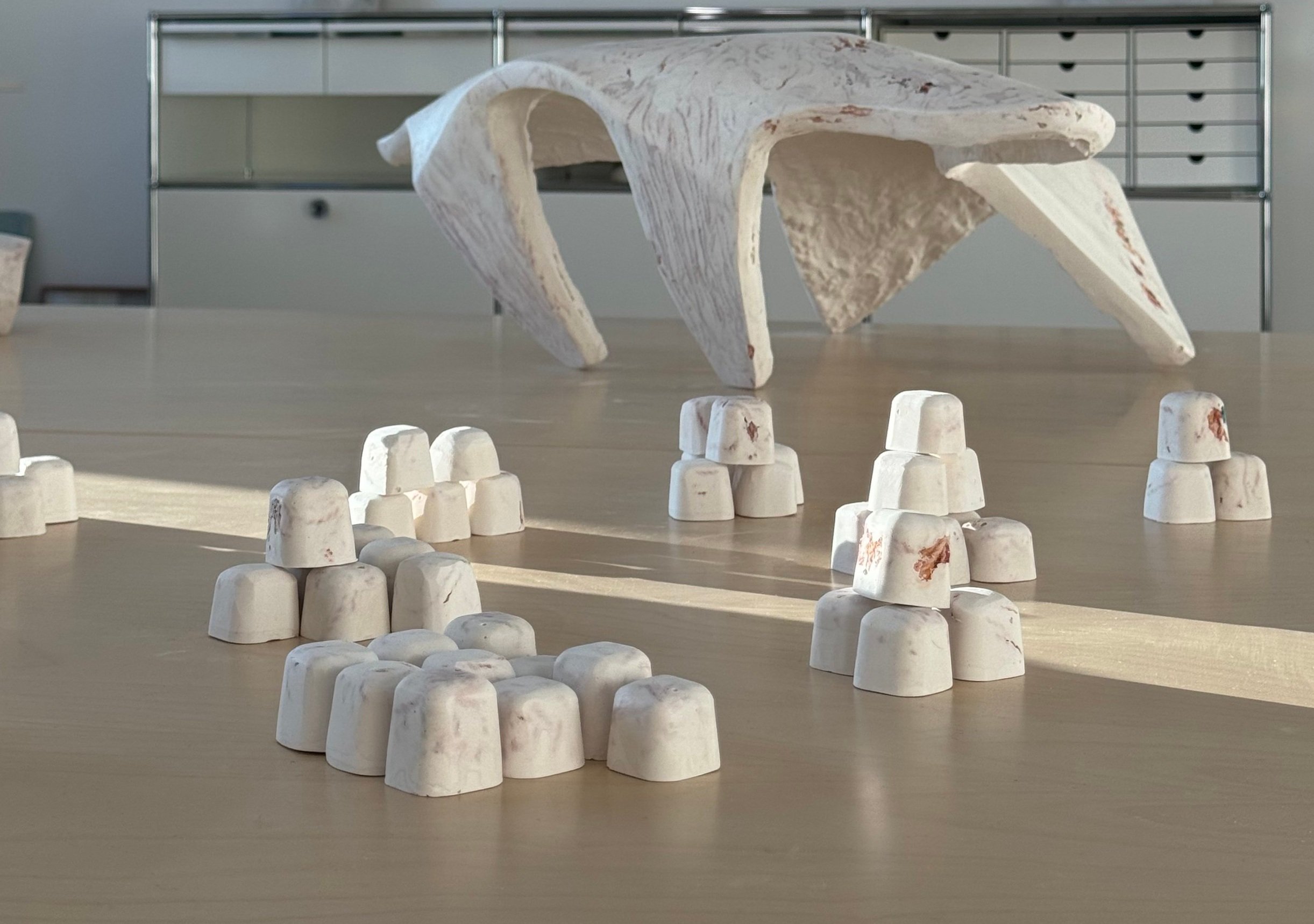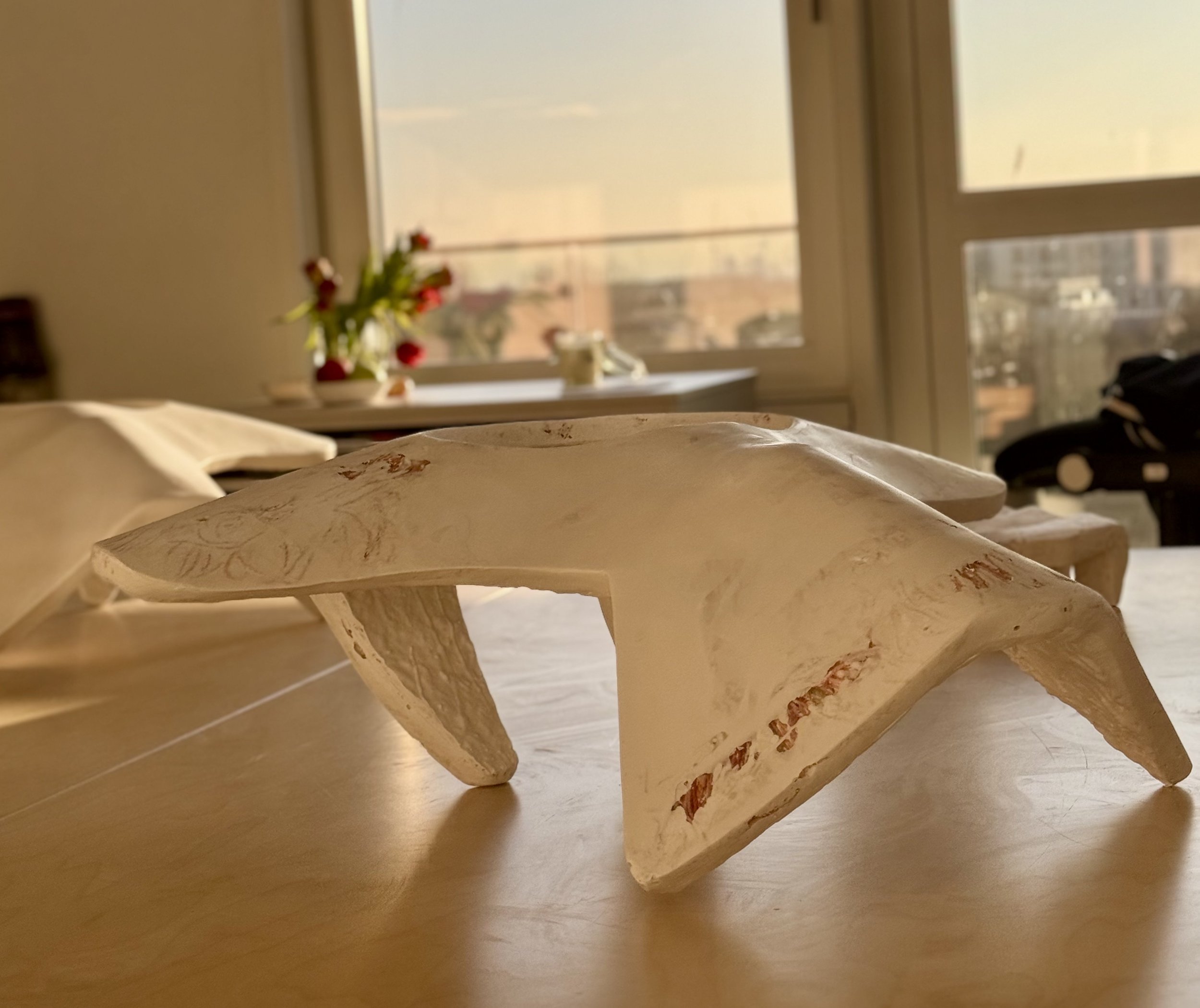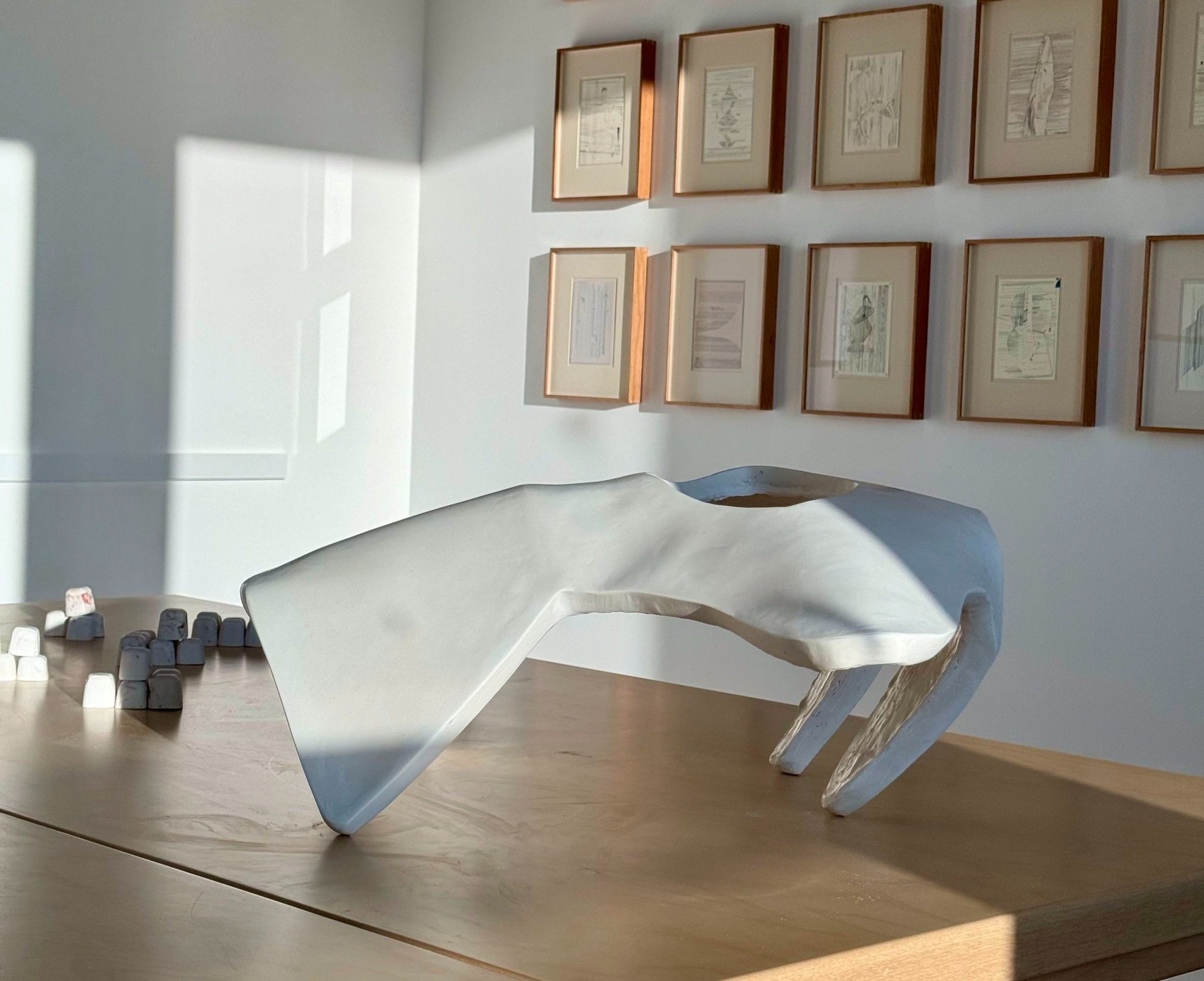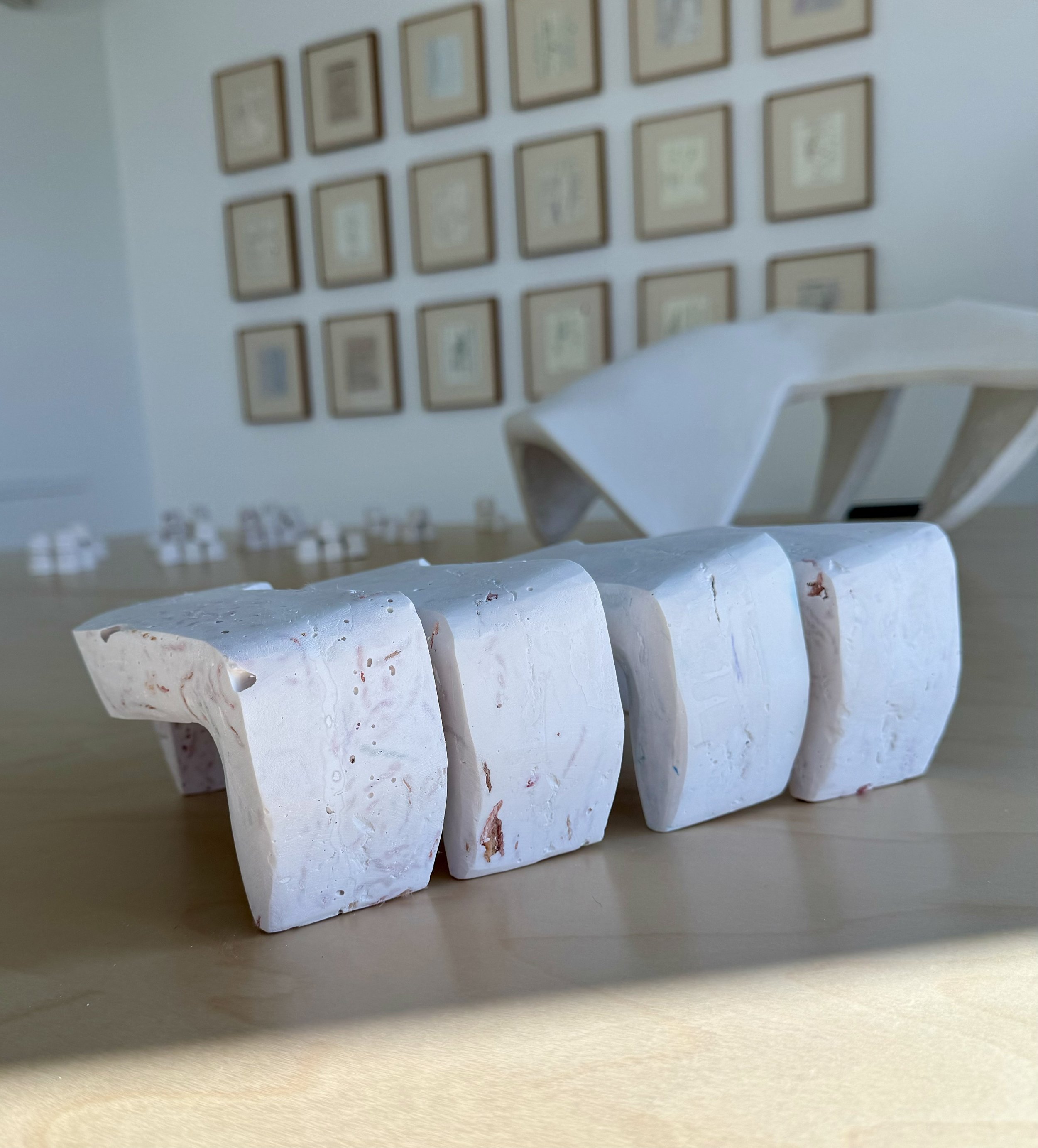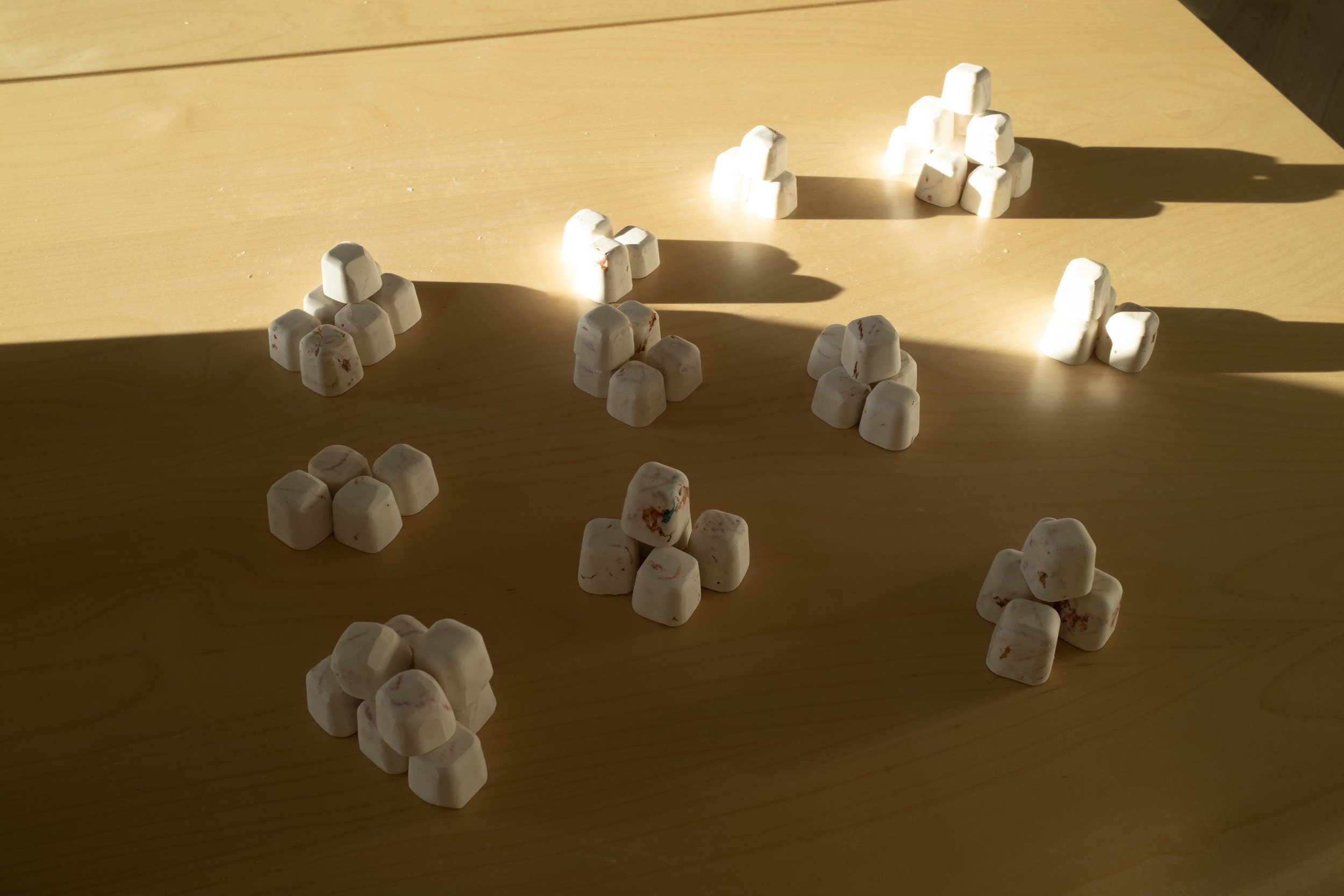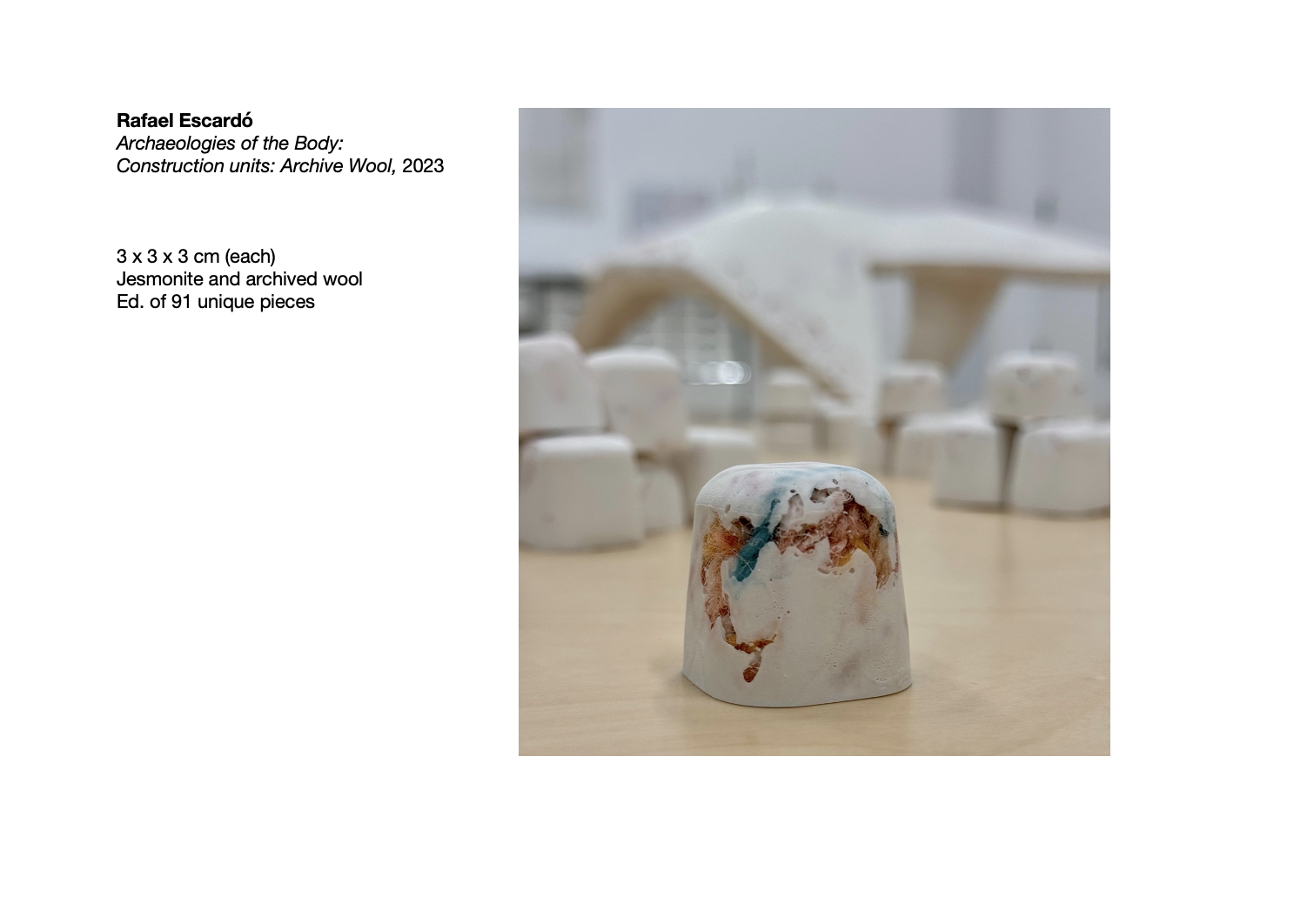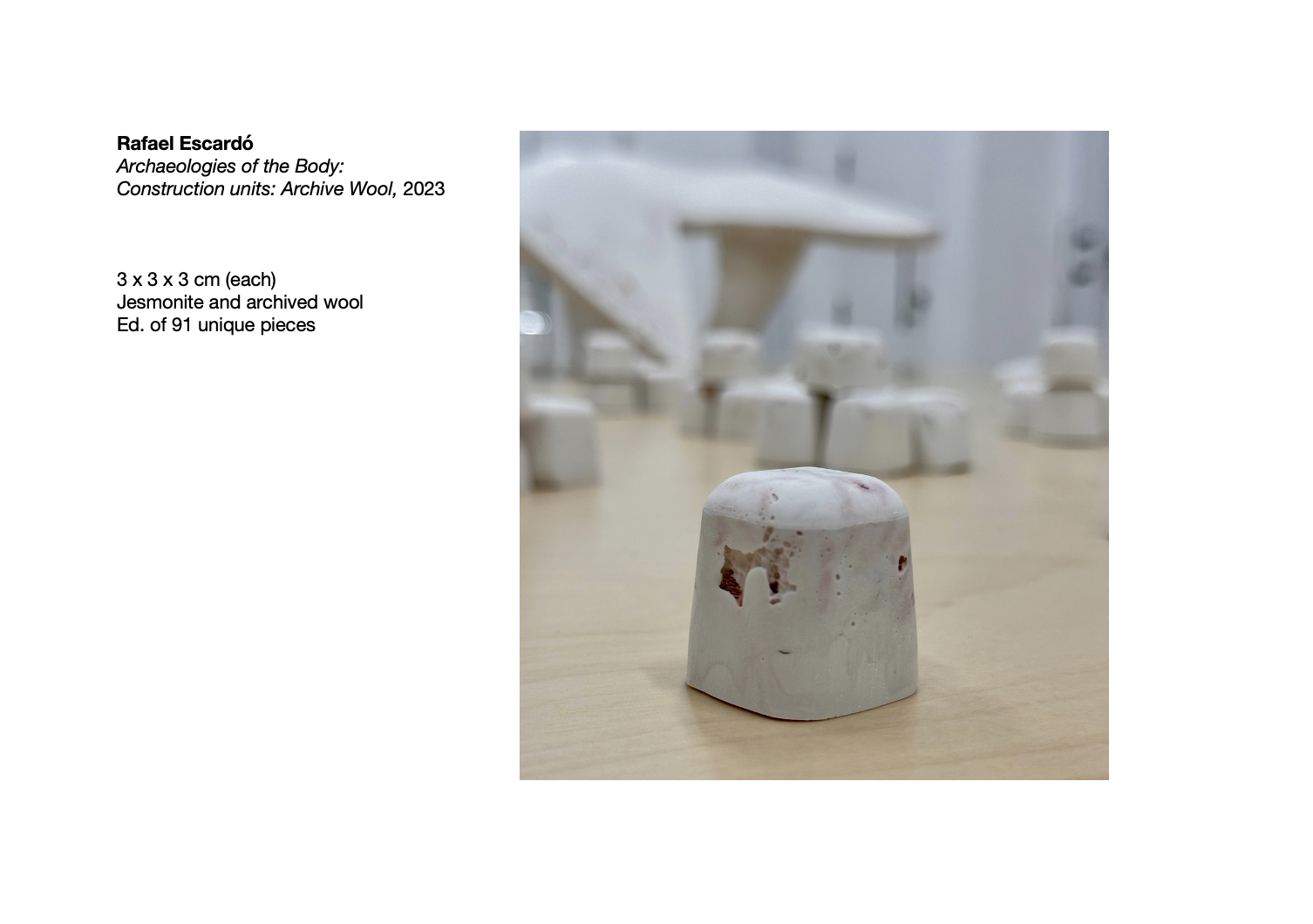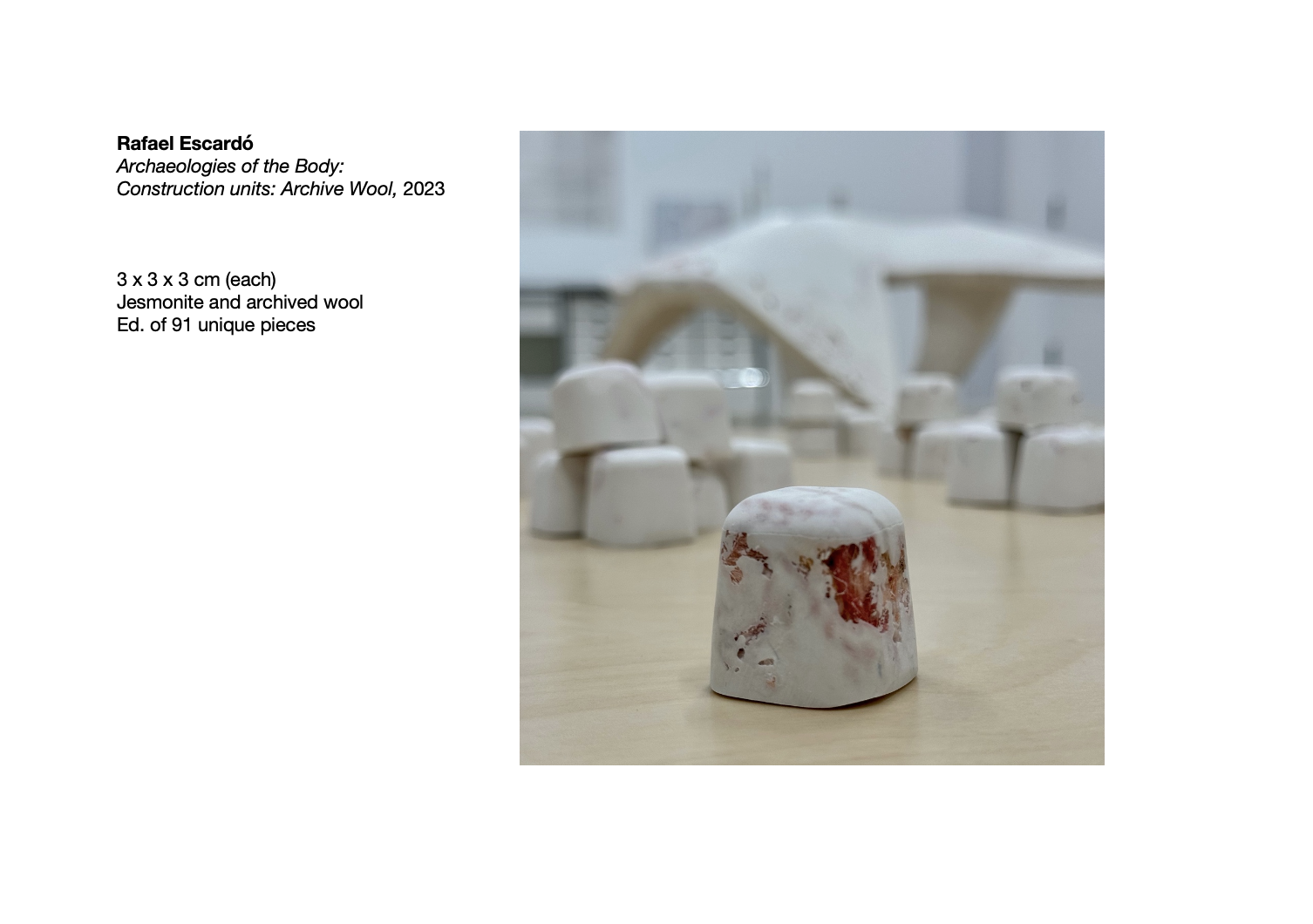Archaeologies Of The Body
Exhibition: 15 till Llama
Exhibition: 15 Till Llama (Nov, 2023), presenting Macarena Rojas (walls) and Rafael Escardó (tabletop).
‘be there in 15,
don’t worry though,
it’s open till late,
at least for the llamas.
15 Till Llama is an exhibition showcasing recent works by Peruvian artists and friends, Macarena Rojas and Rafael Escardó. The exhibition takes the form of a studio visit collaboration that bounces between subliminal similarities on subjects such as Latin American post-colonial identities and the translations of their everyday in contemporary London; subjects both artists naturally share. Sugar-coating the punctuality of speech, the verses read above are colloquial expressions that, just as the exhibition, are only accurate if understanding the adjustments of context.
Inspired by the intersection between bodily informed shapes and visual suggestions seen on the textiles in Jesmonite, Archaeologies of the Body is the continuation of Escardó’s extensive research on performative illustrations of self-construction.
In order to understand Escardó’s practice, it is fundamental to understand his believe on identity being fluid and how we surround our bodies with tangible or intangible elements that make its projection. Based on perception and drawing inspiration from exoskeletal bodies found in nature and mythology, Escardó intends to create subtle choreographic suggestions of wearability on his material work. However, having specialised on textiles and trained as a dancer, this new chapter of the research is also an incursion into harder materiality. Similar to the way metallic bars fortify concrete pillars to keep buildings up; Escardó, was fascinated by how Jesmonite, a modern construction technology material, could use synthetic fabric as a main fortification component. Impressed by observing how textiles, which colloquially categorise as the base material of ‘soft’ sculptures in the art world, are also an essential core element of a hard sculpture. Escardó concluded developing the pieces below by experimenting with his own archived textiles instead of quadaxil fabric to explore the relational plasticity between them. Finally, always playing with language, he addresses them by their categorical labels and proves their fluidity by perceptually channelling the middle grounds on these binaries: soft and hard sculptures, masculinity and femininity, natural and artificial, interior and exterior, conscious and subconscious.

